#joe wahalatsu? seymour jr
Text
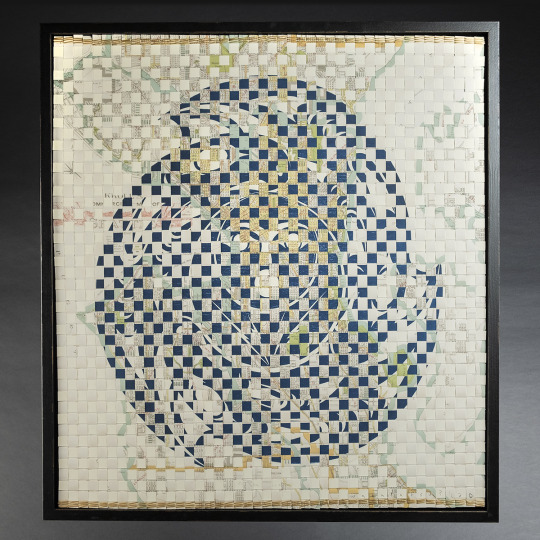

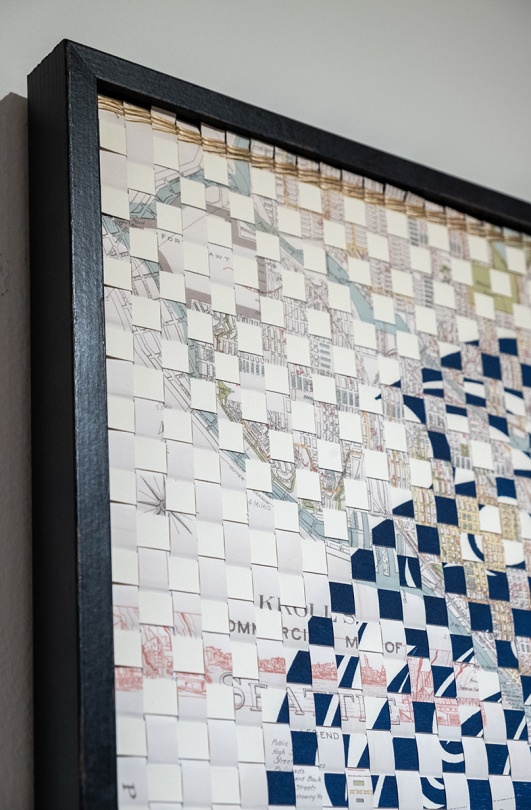

Our Culture Is Woven Into the Land
Joe Wahalatsu? Seymour Jr. (Squaxin/Acoma Pueblo)
woven paper, synthetic sinew, framing. 32.35” x 37.75”
#weaving#joe seymour jr#wahalatsu?#joe wahalatsu? seymour jr#acoma pueblo#acoma#pueblo#squaxin#indigenous art#native art#first nations art#ndn art
17 notes
·
View notes
Text


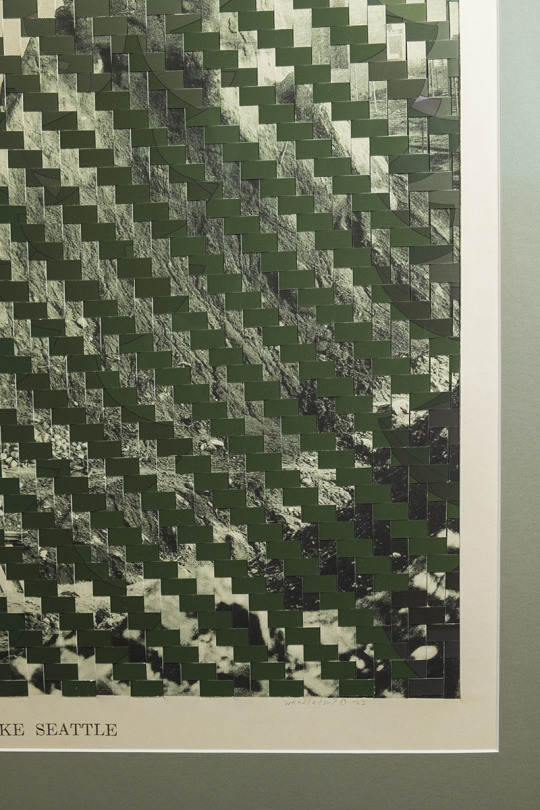
I Went Back to My Territory, But My Territory was Gone
Joe Wahalatsu? Seymour Jr. (Squaxin/Acoma Pueblo)
woven paper, framing. 32.25” x 37.75”
#joe wahalatsu? seymour jr#joe seymour jr#wahalatsu?#weaving#acoma#acoma pueblo#squaxin#indigenous art#native art#first nations art#ndn art
15 notes
·
View notes
Text
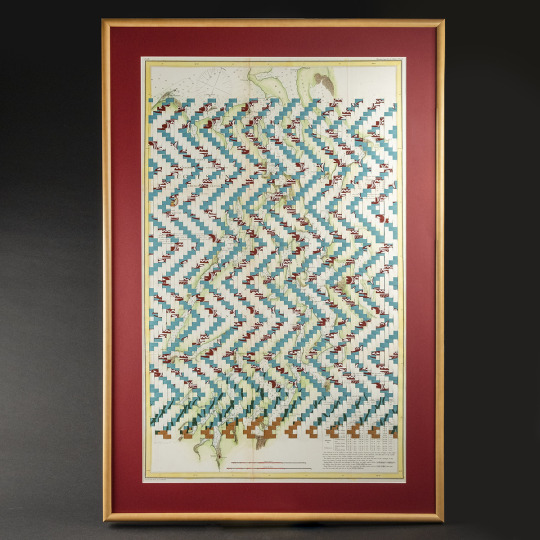

More Than You Realize
Joe Wahalatsu? Seymour Jr. (Squaxin/Acoma Pueblo)
woven archival paper, conservation framing. 47” x 32” x 1.63”
This is a weaving of a map of Puget Sound from 1867 and a graphic image of a school of salmon. I created this piece to highlight how important salmon are, not just to the Native peoples of the Pacific Northwest, but to the animals of the area and to the land. For Native peoples the salmon are our life blood–if there are no salmon, there will be no people. But salmon are equally important to the animals of the region as well. Predators like bears and eagles will take the salmon out of the water and use them to nourish their bodies. After the animals have taken what they need from the salmon they leave the carcass on the ground. Over time, the carcass breaks down and feeds vital nutrients into the land. The trees and the fauna of the temperate rain forests are dependent on these carcasses. If we take care of the habitat of the salmon, then we can have healthy salmon runs which, in turn, means that we can have predators that have enough to eat and we have forests that can thrive and support other types of life.
#joe wahalatsu? seymour jr#joe seymour jr#wahalatsu?#squaxin#acoma pueblo#acoma#pueblo#weaving#indigenous art#native art#first nations art#ndn art
10 notes
·
View notes
Text

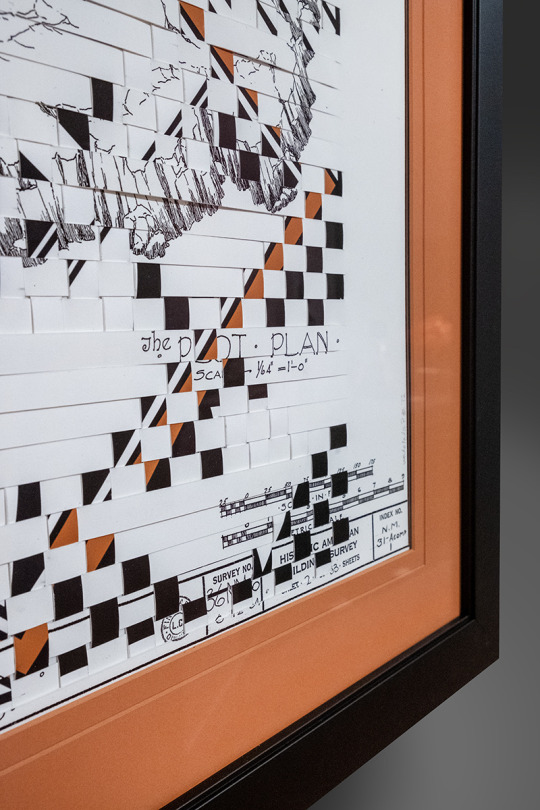

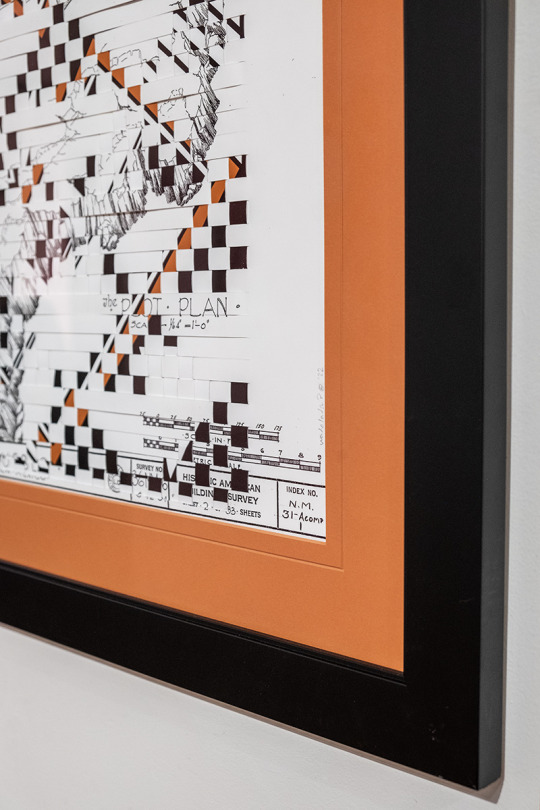
My Mesa in the Valley
Joe Wahalatsu? Seymour Jr. (Squaxin/Acoma Pueblo)
woven paper, framing, 31.75” x 37.5”
#indigenous art#native art#first nations art#ndn art#weaving#joe seymour jr#joe wahalatsu? seymour jr#wahalatsu?
7 notes
·
View notes
Text


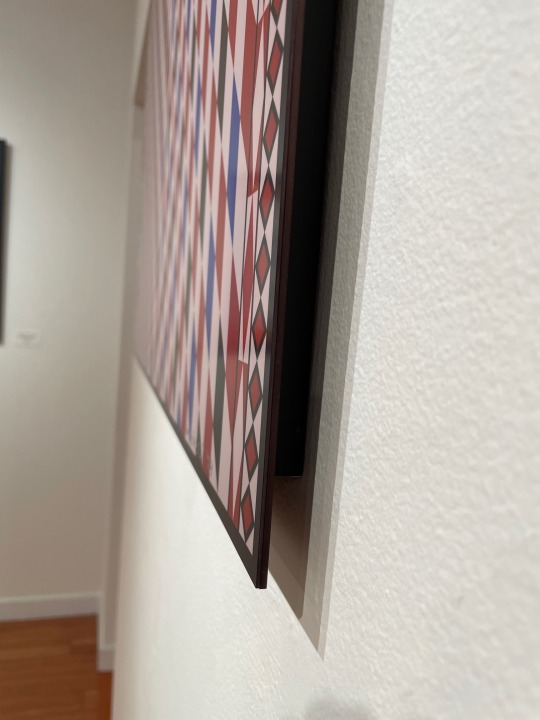
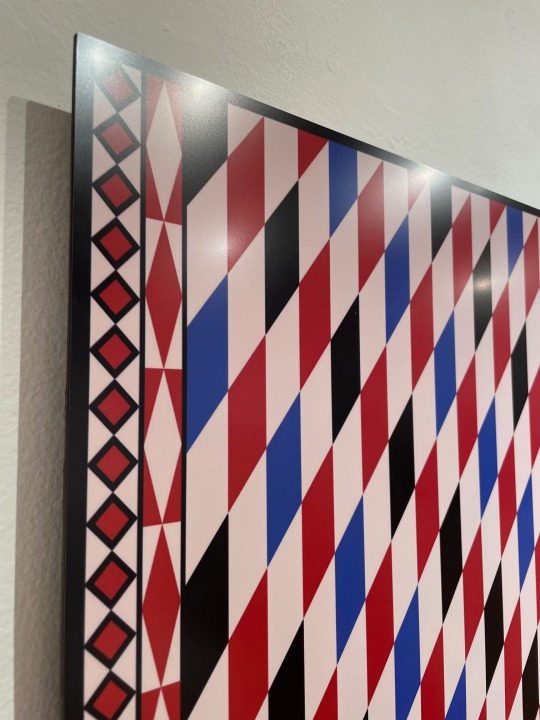
Blanket Study 2
Joe Wahalatsu? Seymour Jr. (Squaxin/Acoma Pueblo)
giclée print on aluminum
#joe seymour jr#joe wahalatsu? seymour jr#wahalatsu?#squaxin#acoma#pueblo#acoma pueblo#indigenous art#native art#first nations art#ndn art
7 notes
·
View notes
Text
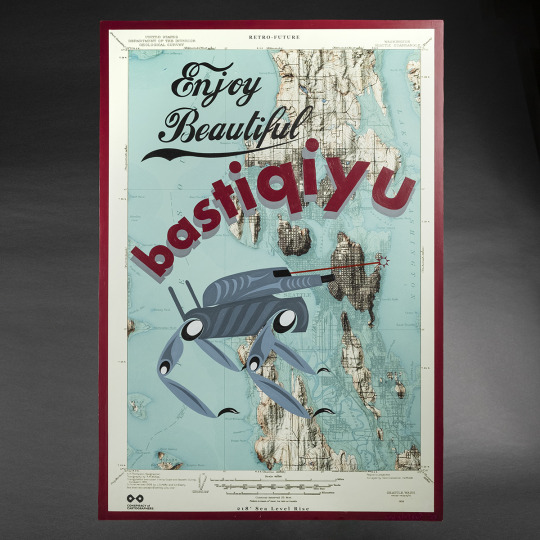
Enjoy Beautiful Bastiqiyu
Joe Wahalatsu? Seymour Jr. (Squaxin/Acoma Pueblo)
archival paper, acrylic paint, birch panel. 35.75” x 24”
Pronounced “Bas-teh-KEE-u” translating to “it has wolves”, referencing the Washington Park neighborhood, approximately just north of Denny Blaine Park.
“Before colonial settlers came to our territories, all the places that now have English names had names in Lushootseed. The paintings in this exhibit pay homage to those names. The names that my ancestors gave to these places were often descriptions of the natural characteristics of the land. “bastiqiyu” translates to “it has wolves,” meaning that you were likely to encounter a wolf at or near that place. “txsIaR” translates into “place of the raven.” It is important to remember these characteristics my ancestors identified and to remember the language that my ancestors spoke.
In this time that governments and institutions are giving “land acknowledgments” before meetings and gatherings, it is very important that we not only acknowledge the land, but that we also acknowledge the language my ancestors spoke and the individual characteristics of the land they lived on.”
#joe wahalatsu? seymour jr#joe seymour jr#wahalatsu?#indigenous art#native art#first nations art#ndn art#squaxin#acoma#pueblo#acoma pueblo
9 notes
·
View notes
Text



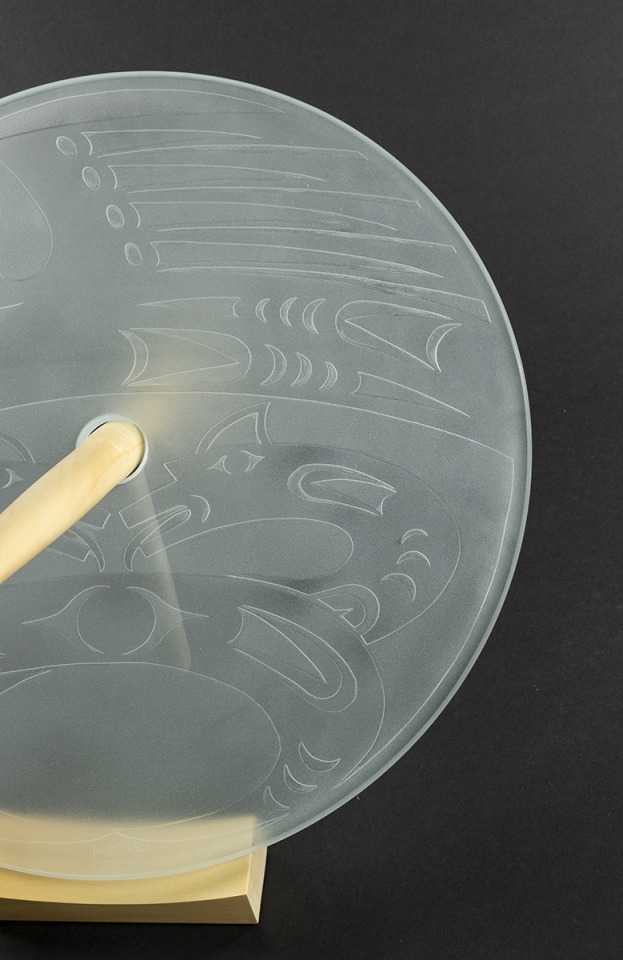

On the Hunt
Joe Wahalatsu? Seymour Jr. (Squaxin/Acoma Pueblo)
Sand carved starfire glass, yellow cedar. 10.75” x 16” x 19”
#joe seymour jr#joe wahalatsu? seymour jr#wahalatsu?#squaxin#acoma pueblo#acoma#pueblo#glass#indigenous art#native art#first nations art#ndn art
7 notes
·
View notes
Text


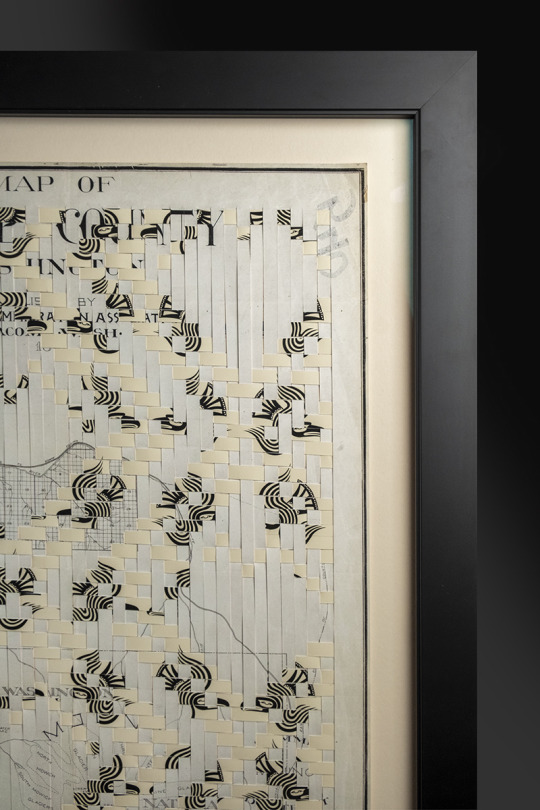
A Murder in Pierce County
Joe Wahalatsu? Seymour Jr. (Squaxin/Acoma Pueblo)
woven archival paper, conservation framing. 31” x 45” x 1.5”
#joe seymour jr#joe wahalatsu? seymour jr#squaxin#pueblo#acoma#acoma pueblo#indigenous art#native art#first nations art#ndn art#weaving
6 notes
·
View notes
Text

Greetings from sdzidzƏlʔaliČ
Joe Wahalatsu? Seymour Jr. (Squaxin/Acoma Pueblo)
Archival Paper, Acrylic Paint, Birch Panel. 20.5" x 35.5" x .75"
Pronounced “TZEETS-zahlal-each,” translating in English to “little crossing over place,” referencing the portage route between what is now King Street Station in the International District of Seattle and Leschi.
“Before colonial settlers came to our territories, all the places that have English names had names in Lushootseed. These paintings highlight the importance of remembering what those names were. The names that my ancestors gave to these places were often descriptions of the natural characteristics of the land. “bastiqiyu” translates to “it has wolves” meaning that you were likely to encounter a wolf at or near that place. “txsIaR ” translates into “place of the raven.” It is important to remember these characteristics my ancestors identified and to remember the language that my ancestors spoke.
In this time that governments and institutions are saying “land acknowledgments” before meeting and gatherings, it is very important that we not only acknowledge the land, but we acknowledge the language that my ancestors spoke and the individual characteristics of the land that they lived on.”
#joe seymour jr#wahalatsu?#joe wahalatsu? seymour jr#indigenous art#native art#first nations art#ndn art#squaxin#acoma pueblo#acoma#pueblo
4 notes
·
View notes
Text

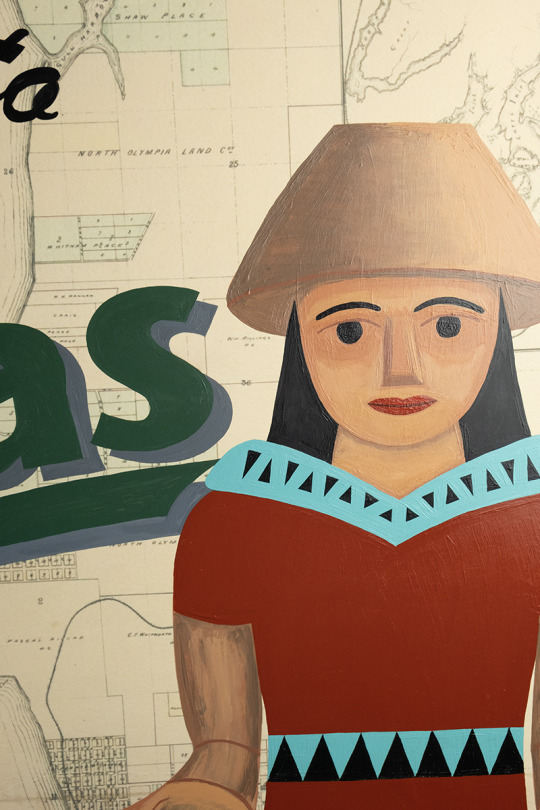

Welcome to StƏČAS
Joe Wahalatsu? Seymour Jr. (Squaxin/Acoma Pueblo)
Archival Paper, Acrylic Paint, Birch Panel. 35.25" x 25.38" x .75"
Pronounced “STEH-chas,” meaning “Place of the Black Bear” in Lushootseed, referencing the area that in English is titled Budd Inlet near Olympia, where the Salish Sea begins.
“Before colonial settlers came to our territories, all the places that have English names had names in Lushootseed. These paintings highlight the importance of remembering what those names were. The names that my ancestors gave to these places were often descriptions of the natural characteristics of the land. “bastiqiyu” translates to “it has wolves” meaning that you were likely to encounter a wolf at or near that place. “txsIaR ” translates into “Place of the Raven.” It is important to remember these characteristics my ancestors identified and to remember the language that my ancestors spoke.
In this time that governments and institutions are saying “land acknowledgments” before meeting and gatherings, it is very important that we not only acknowledge the land, but we acknowledge the language that my ancestors spoke and the individual characteristics of the land that they lived on.”
#joe seymour jr#joe wahalatsu? seymour jr#wahalatsu?#indigenous art#native art#first nations art#ndn art#squaxin#acoma pueblo#acoma#pueblo
3 notes
·
View notes
Text
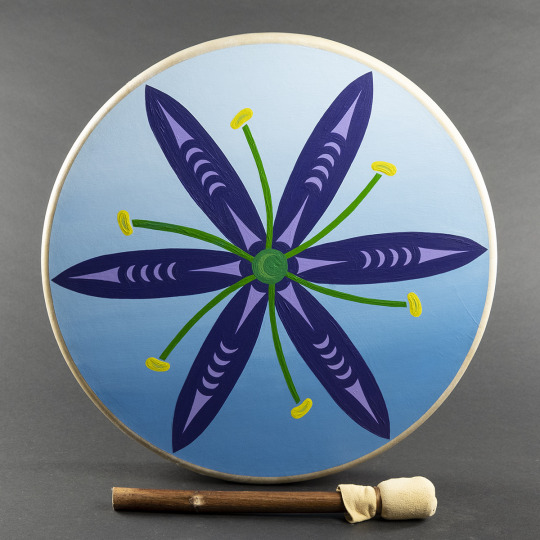
Camas Flower Drum
Joe Wahalatsu? Seymour, Jr (Squaxin/Acoma Pueblo)
deer hide, maple frame, acrylic paint. 17.38” x 17.38” x 3”
#joe seymour jr#wahalatsu?#squaxin#acoma pueblo#drums#instruments#native art#first nations art#indigenous art
27 notes
·
View notes
Text



Enjoy Beautiful txʷskʷaqʷ
Joe Wahalatsu? Seymour Jr. (Squaxin/Acoma Pueblo)
Archival paper, acrylic paint, birch panel. 27.78” x 39.25”
Pronounced “toohk – SKWAHK- w”, with the last letter replicating the sound of blown air. This is the place where Clarks Creek enters into the Puyallup River and translates to “Place of the Raven”.
“Before colonial settlers came to our territories, all the places that have English names had names in lushootseed. These paintings highlight the importance of remembering what those names were. The names that my ancestors gave to these places were often descriptions of the natural characteristics of the land. “bastiqiyu” translates to “it has wolves” meaning that you were likely to encounter a wolf at or near that place. “txsIaR ” translates into “place of the raven.” It is important to remember these characteristics my ancestors identified and to remember the language that my ancestors spoke.
In this time that governments and institutions are saying “land acknowledgments” before meeting and gatherings, it is very important that we not only acknowledge the land, but we acknowledge the language that my ancestors spoke and the individual characteristics of the land that lived on.”
#joe seymour jr#joe wahalatsu seymour jr#wahalatsu?#indigenous art#native art#first nations art#ndn art#squaxin#acoma pueblo#acoma#pueblo
8 notes
·
View notes
Text
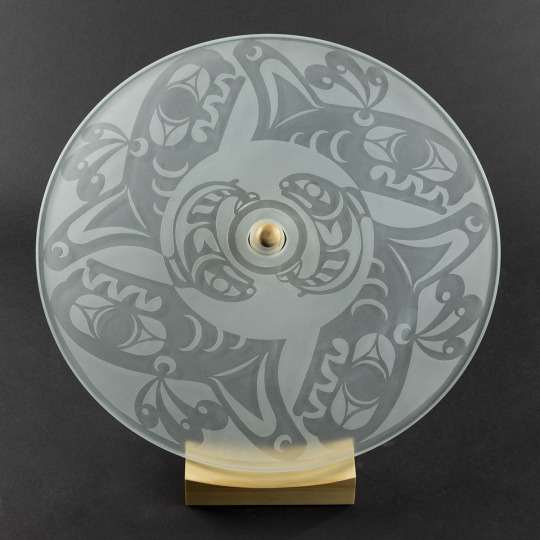
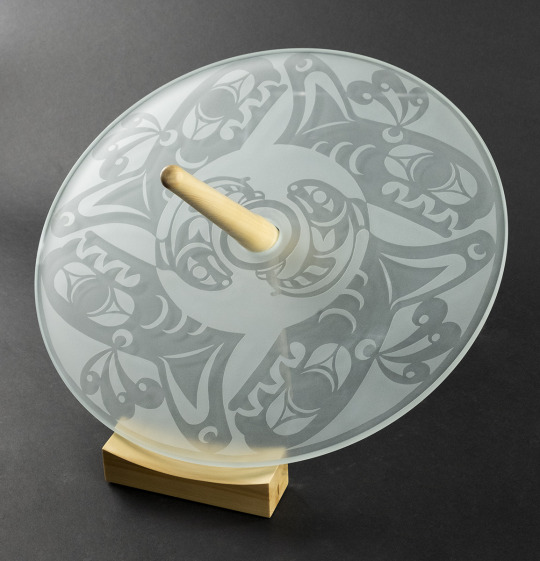


Orca and Salmon Spindle Whorl
Joe Wahalatsu? Seymour Jr. (Squaxin/Acoma Pueblo)
sand carved starfire glass, yellow cedar. 11.25” x 18” x 16”
#joe seymour jr#joe wahalatsu seymour jr#wahalatsu?#glass#squaxin#acoma pueblo#acoma#pueblo#indigenous art#native art#first nations art#ndn art
5 notes
·
View notes